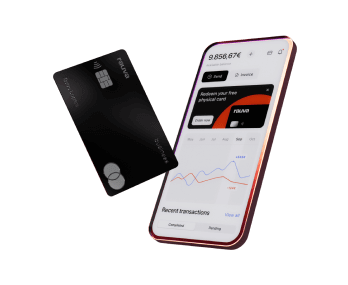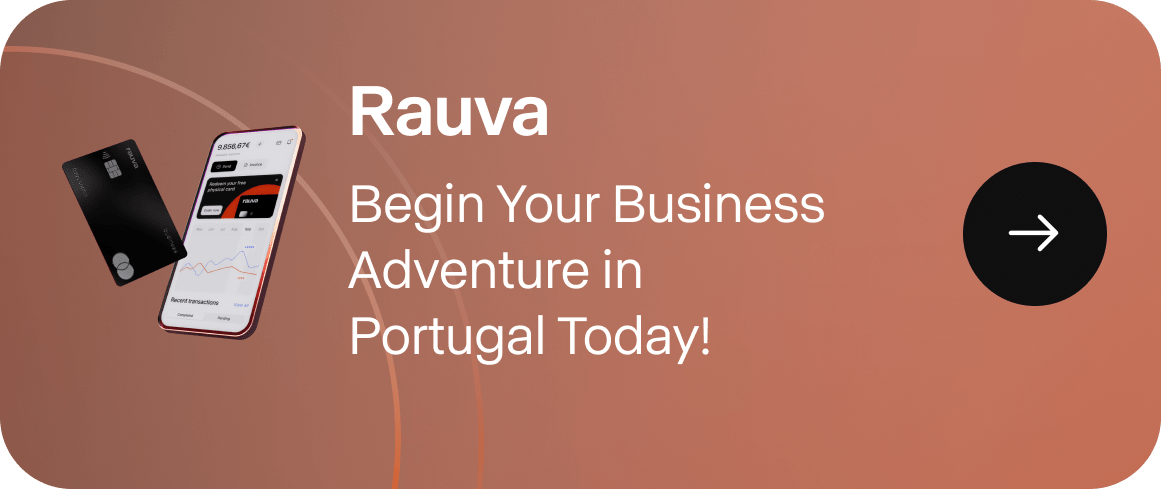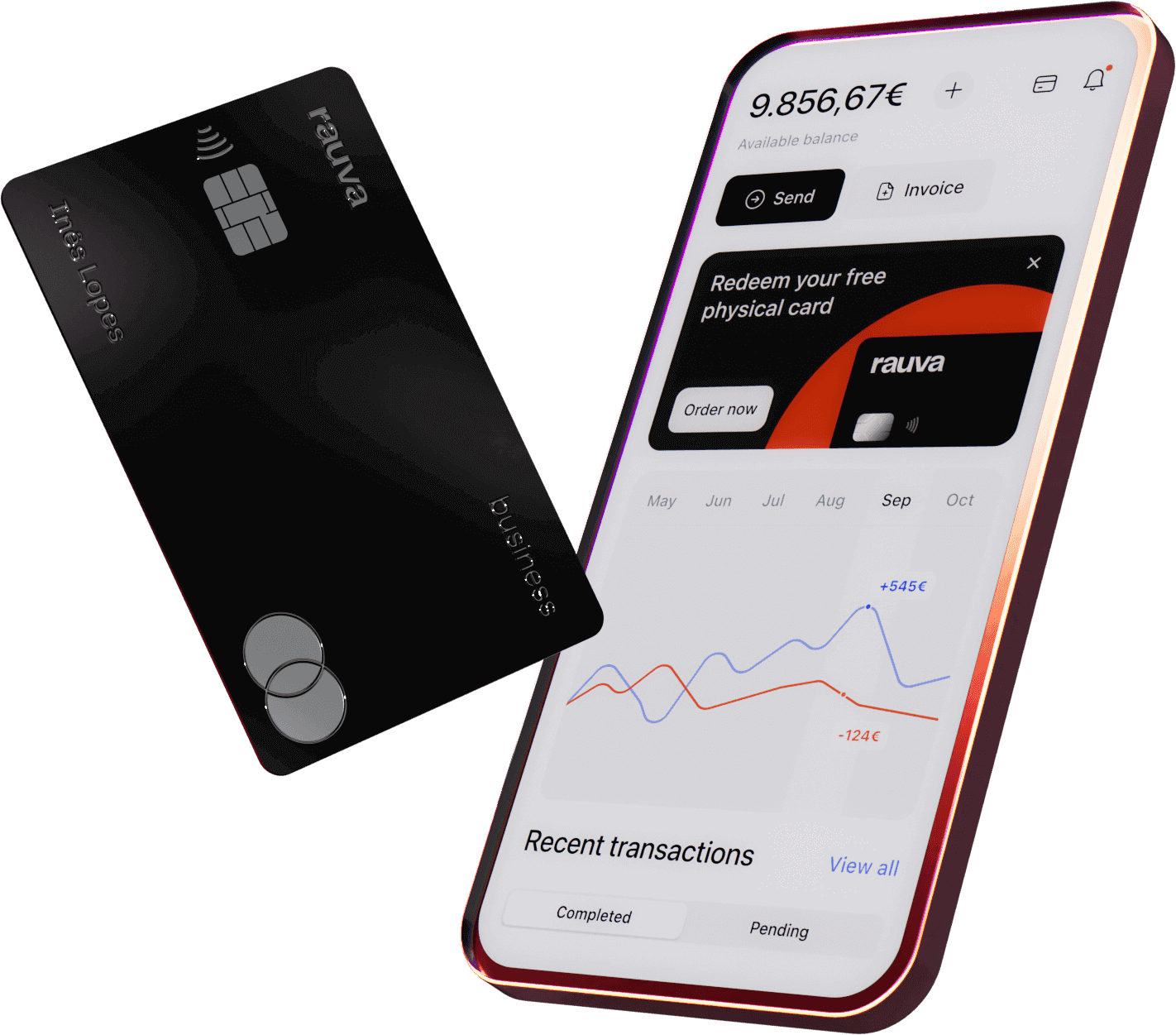You are reading...
Home > Start a Business > How to Validate a Business Idea in 12 Easy Steps
How to Validate a Business Idea in 12 Easy Steps
By Bernardo Barbosa
•
Published on 23 April 2024
•
14mins read
Share

The idea validation process can be hard to navigate, and even a great idea for a business needs to be validated before making a mark in the real world. In this article, we will start by taking a look at what idea validation is all about before sharing 12 valuable insights to help you turn your startup idea into a full-blown business.
What is Idea Validation?
Idea validation refers to the process of assessing and confirming the viability and potential success of a business concept before fully committing resources, time, and effort to its execution. It involves gathering evidence and feedback to determine if there is a demand for your product or service, if it fulfills a need in the market, and if there's a viable customer base willing to pay for it.
The goal of validating a business idea is to reduce the risk of failure by ensuring that it has a solid foundation and market acceptance. It involves researching the market, understanding the target audience, testing assumptions, and iterating on the concept to refine and improve it based on feedback.
Validating a business idea helps entrepreneurs make informed decisions about pursuing, pivoting, or shelving the concept before investing significant resources into its development. So, let's jump right into how to validate a business idea in 12 simple steps:
1. Understand the Pain Points and Needs of Your Potential Customers
For customers, pain points can be:
- **Functional:** Issues related to the product or service not performing as expected.
- **Financial:** High costs, hidden fees, or budget constraints.
- **Convenience:** Difficulties in accessing or using a product/service.
- **Support:** Lack of customer service, poor after-sales support, or slow response times.
- **Emotional:** Stress, anxiety, or dissatisfaction related to a product/service experience.
For businesses, pain points can be:
- **Operational:** Inefficient processes, high overhead costs, or resource inefficiencies.
- **Market:** Challenges in reaching the target audience or facing stiff competition.
- **Employee:** Issues related to team morale, productivity, or retention.
- **Financial:** Cash flow problems, difficulty securing funding, or financial risks.
Identifying and addressing these pain points is crucial for businesses to validate a business idea because it allows them to tailor their products, services, or operations to directly alleviate or solve these problems.
2. Analyze Your Target Market
In other words, business ideas mean nothing if there are no paying customers to back them. If you have an exciting business idea for the overall pet market, for example, your target market segment is comprised of millions of potential customers (i.e., pet owners). However, if your business idea is merely destined for people who have lizards as pets, your target market segment may be potentially too small to be worth it (i.e., lizard pet owners).
Some important tips for analyzing your target market segment include:
- Using demographics and psychographics to create a concise profile of your potential customers.
- Analyzing your current customer base to identify target-market patterns.
- Evaluating your niche's market size.
- Identifying the growth potential of your product idea.
- Going online to research search volume associated with your niche (such as important keywords, overall traffic, and other search engine metrics).
Lean market validation is equally important, and it's all about investing time to know how to create your product or service in the most resource-efficient manner possible.
3. Define a Unique Value Proposition (UVP)
A strong UVP typically includes the following elements:
- **Clarity:** It clearly articulates what your business offers and how it solves a particular problem or fulfills a need for the customers.
- **Uniqueness:** It highlights the competitive advantage of your business. This could be a distinctive feature, superior quality, a unique approach, or a specific benefit that others don't offer.
- **Value:** It emphasizes the specific benefits or outcomes customers can expect from using the product or service, showing why it's so valuable and relevant to your target audience.
- **Relevance:** It's tailored to address the specific pain points or desires of the target market, resonating with your audience's needs, preferences, and aspirations.
The more succinct your value proposition, the closer you are to turning your business idea into a successful business. Uber's UVP, for example, is generally regarded as a great example of a value proposition because it effectively conveys the company's unique advantage in one single sentence: "Uber - The smartest way to get around." Feeling inspired already?
4. Create a Minimum Viable Product (MVP)
A Minimum Viable Product (MVP) is a version of a product with enough features to satisfy early customers and gather feedback for future development. It's a strategy used primarily in product development and startups to quickly and cost-effectively test a concept or hypothesis with minimal resources. However, it's as essential for developing a business idea.
The key characteristics of an MVP are:
1. Directness: An MVP includes nothing but the essential features that address the primary problem or need of your target audience, so forget about all of the noise and be straight to the point.
2. Feedback-oriented: The goal is to develop the product quickly to get it into the hands of early users and potential customers for feedback, learning, and validation.
3. Iterative approach: Based on the feedback received, iterations and improvements are made to the product, gradually adding more features and functionalities.
4. Cost efficiency: MVPs are developed with minimal resources, reducing the risk of investing heavily in a product that may not meet the market's needs.
5. Learning tool: It serves as a learning tool to validate assumptions, test hypotheses, and refine the product based on real user experiences.
Your minimum viable product can truly be your company's MVP (as in Most Valuable Player) because it's the closest you'll ever get to testing your product idea without actually making a product! But how exactly does one test an MVP?
5. Test Your Minimum Viable Product (MVP)
Testing a Minimum Viable Product (MVP) involves gathering feedback from users to understand how they interact with the product, what they find valuable, and what needs improvement. Here's a structured approach to test your MVP:
1. Define testing goals: Clearly outline what you want to learn or validate through the testing phase. Identify specific metrics, behaviors, or user feedback you're seeking.
2. Select early testers: Identify a group of potential customers who align with your target audience. These individuals should be willing to engage with your MVP and provide constructive feedback.
3. Deploy the MVP: Make your MVP accessible to the testers. This could involve providing access to a prototype, a limited version of your product, or a beta release.
4. Analyze user behavior: Use analytics tools to track user interactions within the MVP. Analyze how users navigate the product, which features they engage with the most, and where they encounter issues.
5. Continue testing: Implement changes and updates to the MVP and continue testing with both existing and new testers. Validate if the changes have positively impacted user experience and addressed the identified issues.
Testing an MVP is an iterative process that involves continuous learning and refinement based on user insights. The goal is to validate assumptions, improve the product, and move closer to a market-ready solution.

Rauva
Begin your Business
Adventure in Portugal Today!

6. Collect Feedback
We have talked about the importance of feedback already, but how can entrepreneurs collect feedback to validate their business idea?
First, start by following the five business-idea validation steps listed above. Then, experiment with some of the following feedback collection tactics:
- **Leverage online tools:** Utilize online survey platforms like SurveyMonkey, Google Forms, or Typeform to distribute your survey to a wider audience. Share the survey through social media, email lists, or relevant forums.
- **Conduct customer validation interviews:** Arrange one-on-one interviews or organize focus group sessions with potential customers.
- **Talk with other pros:** Engage with industry experts at events such as conferences or networking sessions to discuss your business idea and seek their feedback and advice.
- **Be aware of the buzz:** Keep an eye on online discussions, forums, or review platforms related to your industry or niche to make sure your specific sector is open to your new business idea.
When it comes to collecting feedback, it's vital to take the opinions of your first paying customers into account. Sadly, the business idea validation process is only truly complete once potential customers become paying customers and have something to say about whether they're happy or not about how they have chosen to spend money.
7. Adapt Based on the Collected Feedback
Once the collect-feedback phase of the validation process is complete, it's time to use all of the collected data to make some important decisions. To put it very simply, it's about keeping the things people like about your product idea while changing the things they don't like about it.
Adapting your business idea (and even your entire business model) to collected feedback depends greatly on your intuition as an entrepreneur, but here are some essential tips that should help you stay on track:
- Focus on identifying patterns! Consistent trends allow you to gain valuable insights that can help you validate your business idea.
- Prioritize feedback based on importance, as not all customer validation interviews and online comments are equally important.
- Revisit the initial assumptions of your business idea to see if these still stand up to the test. In case they don't, be brave enough to assume that you were wrong and do your best to adapt to the actual characteristics of your potential market.
By the end of step seven, you should already have a pretty clear idea of your product market fit and verify whether you have strong market validity.
8. Evaluate Scalability
Now that you know whether your business idea will make the cut or not, it's time to assess its potential for scalability. This is essential not only for entrepreneurs but also for investors, as they will be more willing to spend money on a company with verified growth potential.
There are three fundamental aspects to consider when discussing scalability in the business idea validation process:
1. Operational scalability: Evaluate whether your business can efficiently handle an increase in production, customer demand, or service without a proportional rise in resources or costs.
2. Financial scalability: Assess your business model's ability to handle increased revenue and growth without an equivalent rise in expenses.
3. Technical scalability: Focus on your business's technology infrastructure to handle increased workload, users, transactions, and other important requirements.
9. Craft a Feasible Business Model
Creating a comprehensive business model helps you understand how all the elements of your business fit together, allowing you to identify potential challenges, mitigate risks, and capitalize on opportunities for growth and success. In the end, it's impossible to validate a business idea or product concept without a feasible business model.
10. Test Different Pricing Strategies
The next step of the business validation process requires you to get hands-on specific and outline a pricing strategy that meets at least three key requirements:
1. Target-market alignment (meaning that your product isn't drastically cheaper or more expensive than the products of your direct competitors).
2. Customer alignment (meaning that potential customers do have an incentive to pay for your product in the real world).
3. Cost-efficiency (meaning that your product is potentially profitable).
To see if your business idea's pricing strategy meets these three very basic requirements, here are some of the things you can do:
- Use A/B testing and strategies such as focus groups to see whether a given pricing strategy leads to more successful sales than the other.
- Test different pricing strategies on different segments of clients.
- Consider psychologic pricing tactics such as bundle pricing and charm pricing.
- Experiment with dynamic pricing, limited-time discounts, special offers, and so forth.
If the price's right, market validation will come more naturally to your business idea. The wrong price can utterly ruin your chances of validating your business idea and gaining that much-needed competitive advantage.
11. Create a Prototype or Landing Page
In other words, just put your products or services out there once you have completed all ten steps listed above! You can do so by developing a working prototype or (most commonly) by building an attractive landing page.
Your basic landing page should include the following elements:
1. A compelling headline.
2. Engaging visuals.
3. Concise Copy.
4. At least one Call-to-Action (CTA).
5. An opt-in-form to collect data from potential customers (such as their e-mail addresses).
6. Testimonials from satisfied customers.
7. A responsive design.
8. Your business's contact information.
The goal of a landing page is to engage visitors and encourage them to take the desired action. Keep the design clean, focused, and aligned with your brand messaging to effectively communicate your business idea.
12. Monitor Key Points and Metrics
Last but not least, it's important to keep in mind that the business idea validation process is ongoing. In the same manner that traditional cabs have been hurt by modern transportation network companies (for example), so does your once-valid business idea can become fruitless at one point or another.
To make sure that your business idea isn't stumped by progress, monitor your results as thoroughly as possible while focusing on important key metrics such as:
- **Customer Acquisition Cost (CAC):** Calculates the average cost of acquiring a new client.
- **Customer Lifetime Value (CLV):** Measures the total revenue a business can expect from one customer.
- **Conversion rate:** Indicates the percentage of users that make a desired action (such as the percentage of website visitors that make a purchase).
- **Gross margin:** Calculates the revenue left after deducting all associated costs.
- **Burn rate:** Measures how quickly a company is spending its resources (this one is particularly important for your startup idea).
- **Return on Investment (ROI):** Analyzes the return on marketing campaigns, investments in technology, or other initiatives to assess their effectiveness and profitability.
- **Net Promoter Score (NPS):** Measures customer satisfaction and loyalty by asking customers how likely they are to recommend your business to others.
The key lesson of step 12, however, isn't to get acquainted with all these fancy business terms, but to interiorize that no business idea is ever done: it requires constant monitoring, reshaping, and restructuration.
Summary
Validating a business idea isn't easy, and there's simply no way of guaranteeing it will make a mark even if you follow the 12 steps listed in the article. However, idea validation has got to start somewhere, and our 12 crucial tips make for the perfect starting point.
In sum, this is what we have learned today:
1. Construct your business idea around your potential customers by understanding their pain points.
2. Know your target market inside-out to know how to position your business idea, especially in relation to your direct competitors. Don't forget about lean market validation too!
3. Define a unique value proposition highlighting your business idea's unique advantage.
4. Set a minimum viable product.
5. Put your minimum viable product concept up to the test.
6. Collect feedback everywhere you can, from customer interviews to your first paying customers.
7. Use the collected feedback to make data-driven decisions regarding your business idea.
8. Evaluate the scalability of your business idea.
9. Create a superstar business model.
10. Test different pricing strategies to align with your target market and target customers more effectively.
11. Create a landing page for your product or services.
12. Ensure long-time product validation by monitoring results and adapting your strategy accordingly.
Finally, outline some validation goals to ensure that you're getting where you want to be. Your prospective customers will appreciate it, and your business idea will have a better chance of going from a rough idea to a real company.

Rauva
Begin your Business
Adventure in Portugal Today!

Written by Bernardo Barbosa
Our specialised team focuses on bringing relevant and useful content everyday for our community of entrepeneurs. We love to stay updated and we thrive on sharing the best news with you.
Subscribe to our newsletter
Receive the latests insights and trends to help you start and run your business.

